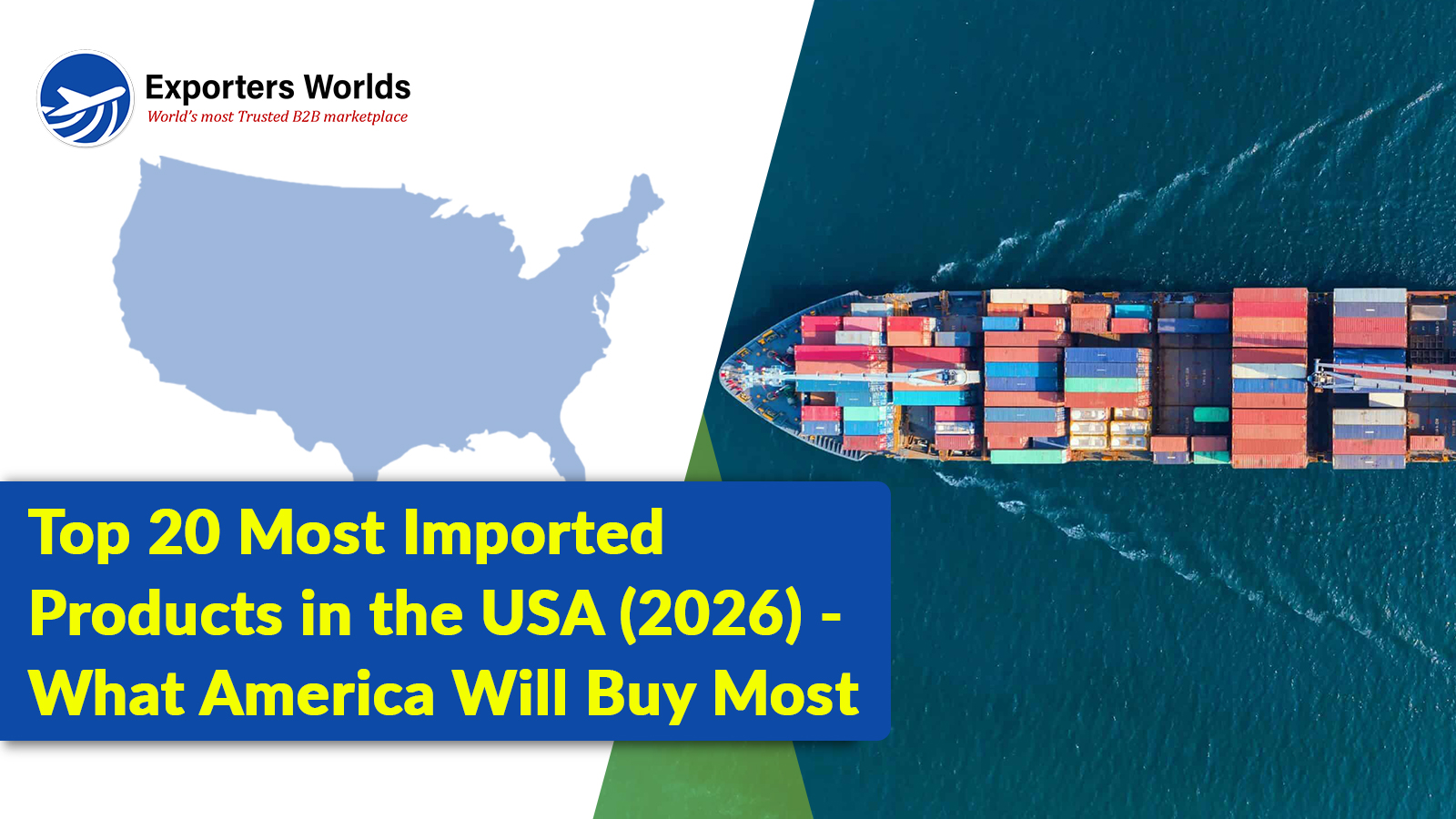How to Export Sunflower Oil- Licensing, Packaging & Top Buyers

You’re not late to the party—yet.
Export sunflower oil? It may sound like something only mega agri-giants or multinational food brands should worry about. But the truth is, right now, small and medium producers are stepping into the export arena like never before.
Why? Because this golden oil is in more demand than most people realize.
It’s not just about cooking anymore. Sunflower oil is being pulled into skincare lines, pharmaceutical formulations, vegan food factories, and even renewable energy experiments.
The real question isn't if the opportunity exists—it's whether you're ready to understand the steps to export sunflower oil internationally… without falling into the classic traps.
Licensing. Packaging. Logistics. Buyers.
Let’s untangle it all—step by step, real-world style.
Why Export Sunflower Oil at All?
Let’s start with the basics. Why bother?
Because The World Is Obsessed With It
India imported more than 2 million metric tons of sunflower oil last year.
The EU? Nearly 4 million tons.
And the post-COVID world is making healthier, plant-based oils a permanent lifestyle choice. Cold-pressed, non-GMO sunflower oil is becoming a health badge. You’re not just selling oil—you’re selling clean labels and clear conscience.
Because Niche Pays Big
You offer organic, unrefined, or cold-pressed oil? Some buyers will pay up to 50% more for that. Especially from countries like Germany, Sweden, and Japan.
And if your oil carries authenticity—traceable farms, minimal processing, strong packaging—you’ve already got their attention.
Because Small Players Are Winning
Agro-processors, farmers, and co-operatives are now exporting in 20-foot flexitanks and small pallet loads. You don’t need to be a conglomerate. You just need to do the basics right.
Step 1: Get Your Licensing & Legal Side Sorted
Yes, it's paperwork. Yes, it’s dry. But it’s your entry ticket to global trade.
Business Registration
Whether you're running a family business or a new LLC, it must be formally registered. Without this, customs won’t even let your product leave the country.
Register with local export promotion councils or ministry of commerce equivalents.
In India, that means DGFT.
In the US, USDA and FDA oversight kick in.
These bodies also help verify export sunflower oil requirements and regulations, which vary country to country.
Export License
It’s not optional.
In India? You’ll need an IEC Code from DGFT.
In the US? You’ll likely need a commodity export license from the USDA.
These licenses usually cost $100 to $250—not much, but priceless if you want your shipment to move.
Certifications Buyers Look For
Forget the old “trust me, it’s good quality” pitch.
Buyers want to see proof.
That’s where sunflower oil exporters with international certification stand out.
-
HACCP
-
ISO 22000
-
FSSAI (India)
-
FDA (USA)
If you’re selling to Europe, Japan, or the US, you won’t even get past customs without these.
Step 2: Package It Like It’s Premium
Your product’s first impression isn’t your sales pitch.
It’s your packaging.
Bulk vs Retail
-
For wholesale buyers? Use flexitanks, drums, or IBCs.
-
For direct-to-shelf? Go with PET bottles, HDPE containers, or glass jars.
Flexitanks hold up to 24,000 liters of oil in one go. Efficient. Clean. Scalable.
Retail buyers, though, are obsessed with details—drip caps, bottle weight, label finish.
Labeling
This is a make-or-break.
Every country wants different things.
Europe asks for nutrition facts, allergen info, multi-language labels.
The Middle East? Arabic translations.
Your label needs to comply with destination-specific regulations, down to font size and barcode specs.
This isn’t just branding—it’s part of export sunflower oil requirements and regulations.
Shelf Life
Sunflower oil oxidizes. That’s science.
So unless you’re shipping it right, your oil could arrive smelling off.
Use packaging with oxygen barriers or inert nitrogen filling.
For cold-pressed oil, consider temperature-controlled freight.
Go Green Where You Can
Markets like Germany, Canada, and Australia now expect eco-friendly packaging.
Compostable seals. Recycled plastics. These aren’t just trends—they’re expectations.
Step 3: Logistics Without the Panic
Here’s where things get messy if you wing it.
Know Your Incoterms
You’ll hear terms like FOB, CIF, DDP.
If you’re new, start with FOB (Free on Board)—you handle things till port, the buyer takes over after.
It’s low-risk. Clean. Ideal for new exporters.
Freight Choices
-
Sea freight is slow but cheap—best for bulk.
-
Air freight is expensive but perfect for trial batches or urgent orders.
Choose based on shelf life, buyer preference, and urgency.
Export Documentation
Here’s the non-negotiables:
-
Commercial Invoice
-
Packing List
-
Bill of Lading
-
Certificate of Origin
-
Phytosanitary Certificate
-
Insurance
Get one wrong, and your shipment gets stuck at customs. Nobody wants that.
Freight Forwarder = Your Best Friend
Don’t try to do everything alone.
Hire a freight forwarder who knows your product, your destination market, and local port rules. A good one saves you time, stress, and thousands of dollars.
Step 4: Find Buyers Who Are Ready to Buy
This is where it gets exciting—and real.
Top Buyer Countries
Want to know where to find sunflower oil buyers for export? Start here:
-
India (still the largest importer globally)
-
Netherlands (the EU’s distribution hub)
-
China (rising food processing sector)
-
Turkey
-
South Africa
-
UAE
These countries together import over $15 billion worth of sunflower oil every year.
Who’s Looking?
-
B2B distributors
-
Supermarket chains
-
Cosmetics and pharma buyers
-
Food factories
-
Sunflower oil distributors looking for exporters who are certified, reliable, and scalable
Where To Find Them
-
Platforms like Exporters Worlds, Tradekey, Global Sources
-
LinkedIn (yes, it's surprisingly effective for B2B outreach)
-
International trade shows like SIAL, Gulfood, Anuga
-
Government export missions—low cost, high value
How To Pitch
Keep it simple, clear, and visual:
-
Certifications
-
Product specs
-
MOQ & Pricing
-
Delivery capabilities
-
Packaging visuals
They want to trust that you can deliver—not just the oil, but consistency.
And Then… There Are The Hurdles
Not to scare you. But this isn’t a walk in the park.
Price Swings
Ukraine was the world’s largest supplier. The war disrupted everything.
You need dynamic pricing strategies. Flexible contracts. Buffer stock.
Regulations Shift Overnight
One month you’re compliant. Next month a new pesticide test rule drops.
Stay plugged into export news, especially in markets like the EU and Canada.
Quality Dips During Transit
If improperly sealed or exposed to heat, sunflower oil loses flavor, color, and shelf life.
Use quality packaging. Vet your logistics partners.
Payment Woes
Advance payments are rare these days.
Use LCs (Letters of Credit) or escrow platforms to secure your payments.
And always check a buyer’s trade history.
Final Tips for First-Timers
-
Test with smaller shipments first—you’ll learn quickly.
-
Document everything—certificates, batch tests, photos.
-
Work with consultants—they cost less than export mistakes.
-
Brand professionally—your label is your ambassador abroad.
-
And don’t just chase orders. Build relationships. That’s where repeat business lives.
Conclusion: Get Ready, The World Is Buying
To export sunflower oil successfully, you don’t need a 200-person team or a multinational budget.
You need understanding. Execution. And belief in your product.
From licensing to packaging, and from regulations to reaching buyers—each step builds your export muscle. And the market? It’s wide open.
If you're wondering where to find sunflower oil buyers for export, just know—they're already looking for you. They just haven’t seen your brand yet.
So if you’re ready to export sunflower oil—now is the time. Not next year. Not when you’re “more ready.” Now.




